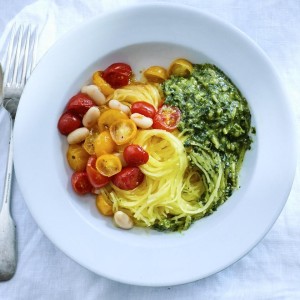Telomeres and Your Health
Recently there has been more discussion about telomeres and longevity. What is a telomere? A telomere is a region of repetitive DNA at the end of a chromosome, which protects the end of the chromosome from deterioration. We all have telomeres, but the length can vary based on genetics and lifestyle. Having shortened telomeres has been associated with vascular diseases, Alzheimers disease, dementia, atherosclerosis, cardiovascular disease, hypertension, diabetes, obesity, osteoporosis, shortened lifespan and possibly cancer. So, having longer telomeres is beneficial! What can we do to lengthen our telomeres?
- Don’t smoke or over consume alcohol: Research has shown that oxidative damage from these activities shortens telomeres.
- Maintain a healthy weight: Obesity is also associated with increased oxidative stress and DNA damage. Maintaining a healthy weight has a positive impact on telomere lengthening.
- Meditate: Stress releases cortisol, a negative hormone. Reducing stress, most notably through meditation, has a beneficial impact.
- Have a more plant based diet. Reducing animal protein and increasing plant protein has been shown to increase longevity and lengthen telomeres. Increase plant based sources of protein such as beans, nuts, soy, and seeds.
- Increase fiber intake: Vegetables, fruits, whole grains, beans, nuts and seeds. Make sure you have a good variety of all of these foods. Men should have 30-38 grams of fiber a day and women should have 25 grams a day.
- Increase Omega 3 consumption: Consume fatty fish such as salmon, green leafy vegetables, nuts, and healthy oils such as canola, soy and flaxseed.
- Have a varied diet that includes antioxidants, Vitamin C, Vitamin E and Selenium and Folate. Fruits and vegetables are loaded with antioxidants. The more pronounced the color, the better. Vitamin C foods include: Citrus, kiwi, red peppers, dark leafy greens, brussels sprouts, strawberries, and broccoli. Good sources of Vitamin E include: Nuts, spinach, sweet potato, avocado, seeds and butternut squash. Good sources of Selenium include: Brazil nuts, tuna, halibut, turkey, chicken and dairy. Good sources of folate include: Dark leafy greens, fortified cereal, rice and grains, beans and beef liver.
- Take in that Vitamin D: The recommended dosage of Vitamin D is 400-800 IU. There is research that increasing to 1000 IU is beneficial. It is always important to talk to your physician before taking a supplement. Good sources of Vitamin D include fatty fish, dairy, eggs and mushrooms.
- Move your body: Exercise can reduce harmful fat and help mobilize waste products for faster elimination, leading to reduced oxidative stress and preservation of DNA and telomeres. Every little bit counts. The more you move, the better you will be.
We cannot control how long we live, but there are so many positive, modifiable things we can do to have an impact on the quality of our lives as we age. Take control of your health and wellness in 2017 with these healthy changes!
Spaghetti Squash with Roasted Tomatoes, Beans & Almond Pesto
From: EatingWell Magazine, January/February 2017
Ingredients
Almond Pesto
2 cups fresh basil leaves
1 cup fresh parsley leaves
½ cup grated Parmesan cheese
⅓ cup whole raw almonds
1 clove garlic
1½ tablespoons red-wine vinegar
¼ teaspoon kosher salt
¼ teaspoon ground pepper
¼ cup extra-virgin olive oil
¼ cup water
Spaghetti Squash & Vegetables
1 3-pound spaghetti squash
¼ cup water
2 pints grape tomatoes, halved
1 tablespoon extra-virgin olive oil
¼ teaspoon kosher salt
¼ teaspoon ground pepper
1 cup canned cannellini beans, rinsed
Directions
1. To prepare pesto: Pulse basil, parsley, Parmesan, almonds, garlic, vinegar and ¼ teaspoon each salt and pepper in a food processor until coarsely chopped, scraping down the sides. With the motor running, add ¼ cup oil; process until well combined.
2. Add water to the pesto in the food processor; pulse to combine.
3. To prepare squash & vegetables: Preheat oven to 400°F. Line a rimmed baking sheet with foil.
4. Halve squash lengthwise and scoop out the seeds. Place cut-side down in a microwave-safe dish and add water. Microwave on High until the flesh can be easily scraped with a fork, about 15 minutes.
5. Meanwhile, toss tomatoes with oil, salt and pepper in a large bowl. Transfer to the prepared baking sheet. Roast until soft and wrinkled, 10 to 12 minutes. Remove from the oven. Add beans and stir to combine.
6. Scrape the squash flesh into the bowl and divide among 4 plates. Top each portion with some of the tomato-bean mixture and about 3 tablespoons pesto sauce. To make ahead: Refrigerate pesto (Step 1) for up to 5 days. Tips: Turn leftovers into a pesto-turkey sandwich for lunch: Spread 1½ Tbsp. leftover pesto on 2 slices toasted whole-wheat bread. Top with 3 oz. sliced deli turkey, 2 lettuce leaves and 2 tomato slices.
Nutrition information
Serving size: 1½ cups each
Per serving: 400 calories 26 g fat(4 g sat); 10 g fiber; 37 g carbohydrates; 12 g protein; 140 mcg folate; 8 mg cholesterol; 12 g sugars; 0 g added sugars; 3780 IU vitamin A; 47 mg vitamin C; 262 mg calcium; 4 mg iron; 499 mg sodium; 1020 mg potassium
Nutrition Bonus: Vitamin C (78% daily value), Vitamin A (76% dv), Folate (35% dv), Calcium (26% dv), Iron (22% dv)




